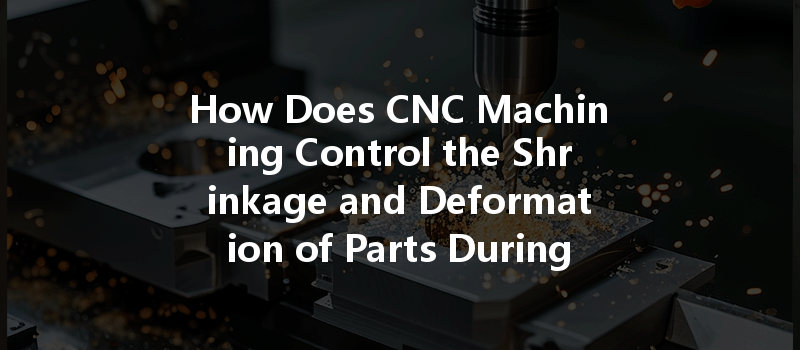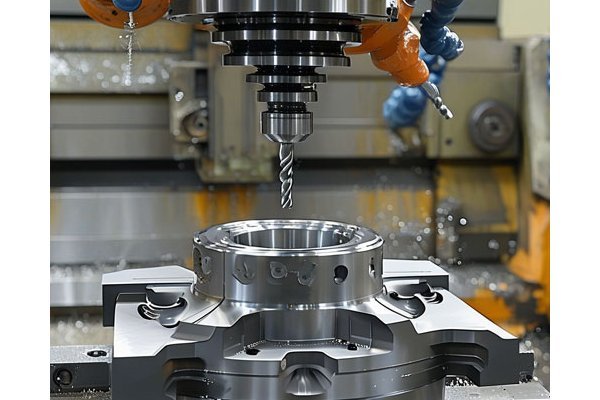Opening: An Eye-Opening Statistic
Did you know that improper shrinkage and deformation during CNC machining can lead to a staggering 40% waste in material costs? For manufacturers, this isn’t just a statistic—it’s a call to action. As the manufacturing landscape becomes increasingly competitive, understanding how to control shrinkage and deformation in CNC machining processes can effectively safeguard profit margins, improve quality, and enhance overall production efficiency.
The Importance of Controlling Shrinkage and Deformation
CNC (Computer Numerical Control) machining has revolutionized the manufacturing industry, offering precision and efficiency that were previously unattainable. However, challenges such as shrinkage and deformation remain significant hurdles. These issues can compromise the dimensional integrity and surface finish of manufactured parts, causing costly interruptions and delays.
Understanding how to mitigate these issues is crucial. This blog delves deep into the methods, technologies, and best practices for controlling shrinkage and deformation during CNC machining, providing a comprehensive guide for engineers, machinists, and manufacturers alike.
Understanding Shrinkage and Deformation
What Are Shrinkage and Deformation?
Shrinkage refers to the reduction in volume and dimensions of a material as it cools or undergoes a change in state, often seen in metals during solidification. Deformation, on the other hand, occurs when a part changes shape due to internal stresses, thermal expansion, or external forces.
Both phenomena are influenced by several factors including the material type, processing conditions, and cooling rates. This understanding lays the groundwork for developing strategies to control or minimize these effects during machining.
Factors Contributing to Shrinkage and Deformation
Different materials exhibit unique melting points, thermal expansion coefficients, and characteristics that influence how they behave during machining. For instance, certain aluminum alloys may experience more shrinkage than others due to their specific compositions.
Solution: Select materials wisely, opting for those with known stability during machining.
Rapid cooling imparts thermal stresses that can cause deformation. Metals that solidify quickly are more susceptible to cracking and warping.
Solution: Implement controlled cooling mechanisms to ensure uniform temperature distribution throughout the part.
Inadequate support during machining or inappropriate uses of tooling can exacerbate deformation issues. Poor design can result in uneven stress distribution.
Solution: Invest in quality fixtures and tools designed to hold components firmly while accommodating for any thermal changes during the process.
Feed rates, spindle speeds, and depth of cut all greatly influence the thermal and mechanical behavior of the material during machining.

Solution: Experiment with machining parameters to find the optimal settings that minimize thermal buildup and alteration in structure.
Techniques for Minimizing Shrinkage and Deformation
Pre-emptively manipulating the microstructure of materials can significantly diminish deformation during machining. Techniques such as annealing or quenching can help stabilize the materials.
Implementation: Carry out appropriate heat treatment before CNC machining to ensure a more predictable response during the process.
Integrating advanced cooling systems—such as temperature-controlled enclosures or coolant systems—can help manage the thermal profile of the machining process.
Implementation: Regularly monitor temperatures and adjust coolant flow to maintain a consistent thermal environment.
Modern Computer-Aided Design (CAD) and Computer-Aided Manufacturing (CAM) software equipped with simulation capabilities allow manufacturers to predict potential deformation issues before actual production begins.
Implementation: Utilize CAD/CAM software simulations to analyze models and anticipate deformation during production phases.
Incorporating sensors and IoT devices into CNC machines can provide instant feedback during the machining process, allowing manufacturers to adjust parameters instantly to minimize shrinkage.
Implementation: Implement real-time monitoring to identify deviations and modify process parameters on the fly.
To minimize risks and ensure dimensional accuracy, a robust quality control plan should be in place. Continuous monitoring and inspection can promptly catch any deformity before the finished product is completed.
Implementation: Establish regular inspection checkpoints throughout the machining process.
: The Path to Precision Machining
In conclusion, controlling shrinkage and deformation in CNC machining is not merely an operational detail; it is a crucial aspect of ensuring quality and efficiency in production processes. By understanding the factors that contribute to these phenomena and employing targeted strategies—such as heat treatment, advanced software tools, real-time monitoring, and rigorous quality controls—manufacturers can transform their production lines into models of precision and reliability.
The knowledge gained from this exploration is indispensable for anyone involved in manufacturing. As competition intensifies and the demand for high quality rises, addressing shrinkage and deformation will become increasingly vital. Companies that invest time and resources into understanding these concepts will not only foster better manufacturing processes but also achieve substantial long-term savings and improved customer satisfaction.
So, it is high time for manufacturers to step back and reconsider their machining strategies. Staying ahead of manufacturing challenges will lead to not just survival, but thriving in this dynamic landscape. It’s more than just machining—it’s about mastering the craft of precision to ensure that every part produced is a testament to quality and innovation.






